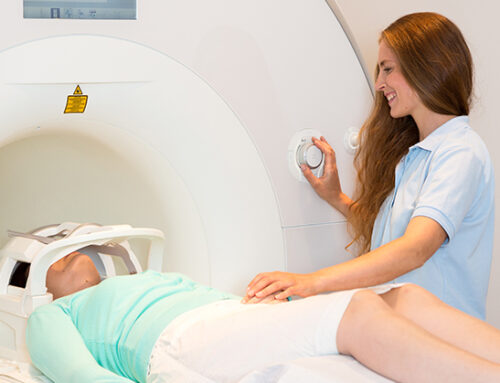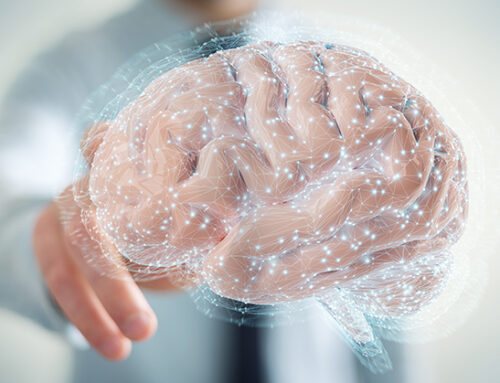Don’t tell me you thought you only had one brain.
Although the brain that sits inside the skull gets most of our attention when we think about our memory and cognition, many medical researchers recognize that we actually possess at least two other brains – dense groupings of nerve tissue and neurons – that help run the body.
Added to that, studies suggest that debilitating conditions like Parkinson’s disease, which can hamper your mobility and destroy your memory, may start among neurons that are outside the “main brain” located between your ears. You need to know this. . .
Important new research is upending our ideas about how brain cells and the nervous system function and stay healthy. If you’ve been reading this newsletter for long, you already know about the “second brain” located in the gut.
The fancy name for it is the “enteric nervous system.” This consists of millions of neurons that line the digestive tract. These neurons coordinate the muscle contractions that push the food we eat through the intestines.
Some scientists actually call these digestive nerves the first brain because it evolved before the creation of the central nervous system and the brain cells in our heads.
It’s only been recently, however, that researchers have been able to accurately examine how the different types of neurons that line the intestines fire off in unified bursts to keep the digestive muscles all working together in an organized sequence.1
Newly Found Parkinson’s Link
But aside from being involved in keeping things moving in the digestive tract, the enteric neurons have been implicated in the development of Parkinson’s disease and other neurodegenerative conditions.
Scientists at Georgetown University and the University of Oklahoma have found that alpha-Synuclein (αS), an inflammatory protein tied to the development of Parkinson’s, is initially released in the esophagus, stomach and duodenum during infections. Only later does it cause problems in our main brain.2
As a result, say the researchers, chronic infections in these parts of the digestive tract lead to the build-up of alpha-Synuclein which eventually spreads from the enteric neurons to the neurons in the head.
Plus, along with the spread of this lethal protein, other research shows that harmful microbes living in the digestive tract can form toxic clumps of misfolded proteins that damage the enteric neurons and also spread to the main brain.3
These findings demonstrate the importance of avoiding processed foods and eating plenty of fiber-filled fruits and vegetables to keep your digestive system healthy and protect against Parkinson’s. Supplementing with probiotics or eating fermented foods is likewise a good idea.
Processed foods and excessive carbohydrates, especially sugar, can favor the growth of digestive tract pathogens. These not only threaten digestion but can undermine the reliability of your memory and brain function.
And Then There’s Your Third Brain. . .
Another of your “brains,” this one called the nodose ganglion, consists of a group of nerve cells at the back of the neck (although it can also be considered part of the brainstem). These cells send out and take in nerve signals from the lungs, heart, stomach and other organs.
Most of these connections go through a large nerve called the vagus nerve (which also connects the neurons in the digestive tract to the central nervous system.)
What’s really interesting about the nodose ganglion is that researchers have discovered that shining infrared light on parts of this “brain” can potentially be used to remedy high blood pressure, heart arrhythmias, asthma, sleep apnea and life-threatening diarrhea.4
The infrared light can be used to alter the ganglion’s signals.
“Different parts of the nodose ganglion affect different parts of the body,” explains researcher Stephen J. Lewis. “If we want to lower blood pressure, we can target one part of the ganglion with infrared light. If we want to stop diarrhea, we target the part that controls peristalsis, which pushes ingested food through the digestive tract towards its release at the anus.”
Possible New Therapy for Strokes
The upshot of all of this research is that when we look at the health of the brain, we can’t limit ourselves to looking only at what happens in the cells of our “first brain.” For instance, studies show that stimulating the vagus nerve (the same nerve that connects the brain to the digestive tract) can help the neurons in our head recover from strokes.5
If you want to increase your chances of avoiding Alzheimer’s disease, Parkinson’s and other brain issues, you have to follow a healthy lifestyle that keeps the entire body functioning optimally. That’s the best way to protect all of your “brains.”
- http://www.jneurosci.org/content/early/2018/05/28/JNEUROSCI.3489-17.2018
- https://www.ncbi.nlm.nih.gov/pubmed/28651250
- https://www.ncbi.nlm.nih.gov/pubmed/27708338
- https://www.researchgate.net/publication/319935797_RedNear_Infrared_Light_Stimulates_Release_of_an
_Endothelium_Dependent_Vasodilator_and_Rescues_Vascular_Dysfunction_in_a_Diabetes_Model - https://www.ncbi.nlm.nih.gov/pubmed/24553102







